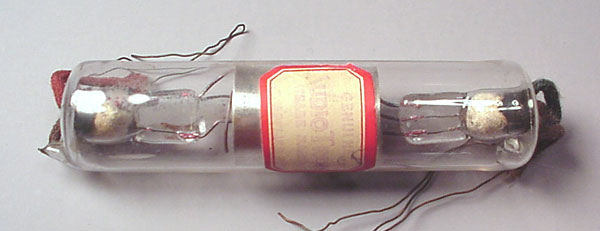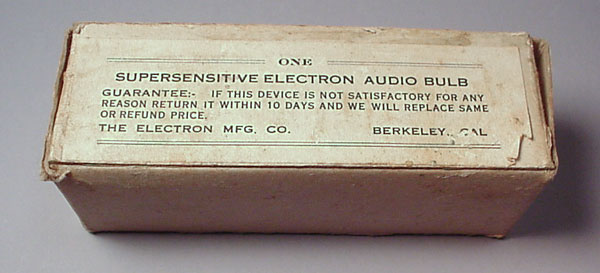|
AudioTron Tubes |
||
|
|
||
| The AudioTron tube
first appeared in 1915, the product of Elmer Cunningham, who later became a
key player in the RCA organization. Manufactured in Oakland, CA,
it consisted of an aluminum plate and a spiral grid inside a
double-ended glass cylinder. A center-tapped tungsten filament allowed one
section to be used until failure, and then the second. Both could
be used simultaneously for greater output. The tube shown above is an early example, that used a sticker onto which the identification was stamped. As is quite common, the printing has faded badly. Later tubes had professionally printed labels, and still later tubes had markings etched into the glass envelope. |
||
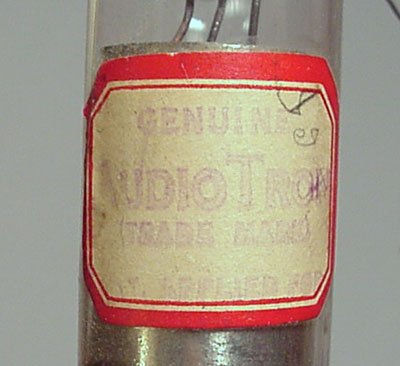 |
||
|
"Genuine AudioTron (Trade Mark) Pat. Applied For" No patent was ever issued for this tube. In fact, DeForest sued Cunningham for patent infringement, and settled out of court. Their agreement allowed the manufacture of these tubes to continue. The printed labels on later examples show the DeForest patent. Initially, these tubes were sold for $7.50, which was far cheaper than the DeForest Audion, primarily because DeForest would not sell tubes without the detector/battery box in which they were used. The competition from the AudioTron led DeForest to produce a similar tube of his own. |
||
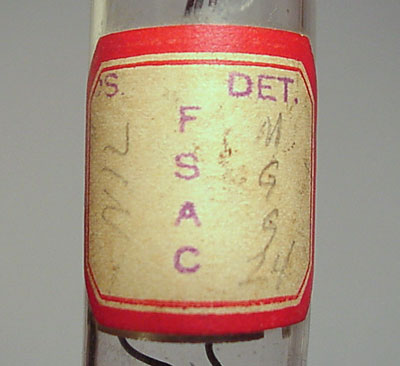 |
||
| This sticker
is on a second tube that was acquired from the same source as the one
shown above. The tube is of identical construction, and the
sticker is certainly original, but its significance of the markings is
unknown. If anyone can shed light on this, I would appreciate an
email. All tube manufacture for civilian use ceased with the entry of the US into WW-I in April, 1917. A version of Cunningham's AudioTron was made briefly after WW-I, but was rather obsolete at that point considering the advances that were made in tube design and manufacture during the war. |
||
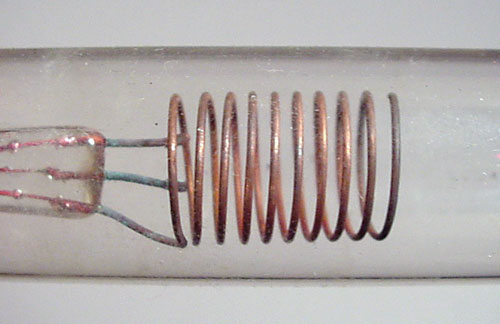 |
||
| This is the grid structure
from a broken AudioTron with the plate removed (no, I didn't break it).
These tubes were very prone to microphonics (modulation of the signal
caused by external vibration), and from this view, it is easy to see
why. A gentle tap will cause a prolonged vibration of the grid and
even momentary shorts between the grid and plate. There were a number of other companies which manufactured copies of the AudioTron. One such tube is shown below, with its original box, made by the Electron Manufacturing Company which began production in 1916. While AudioTron was a registered trademark of Cunningham's company, all similar tubes are generically called AudioTrons (or Audiotrons) today. In most cases, without stickers, it is difficult or impossible to tell by whom the tubes were made. |
||
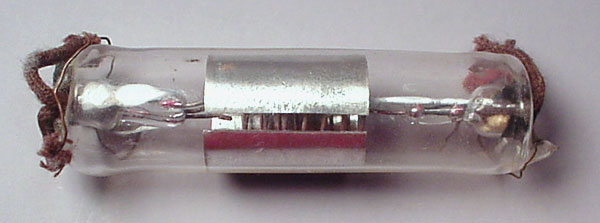 |
||
|
|
||
| Some faint penciled markings on this box show it as the property of an A. C. Ditmar (a guess-the name is almost illegible) as of 2/9/17. It had been tested and noted as a "sensitive bulb, both filaments good, works best with 5 to 6 cells of B Battery". A later notation indicated that it had been retested on 1/15/21, with similar results. |
